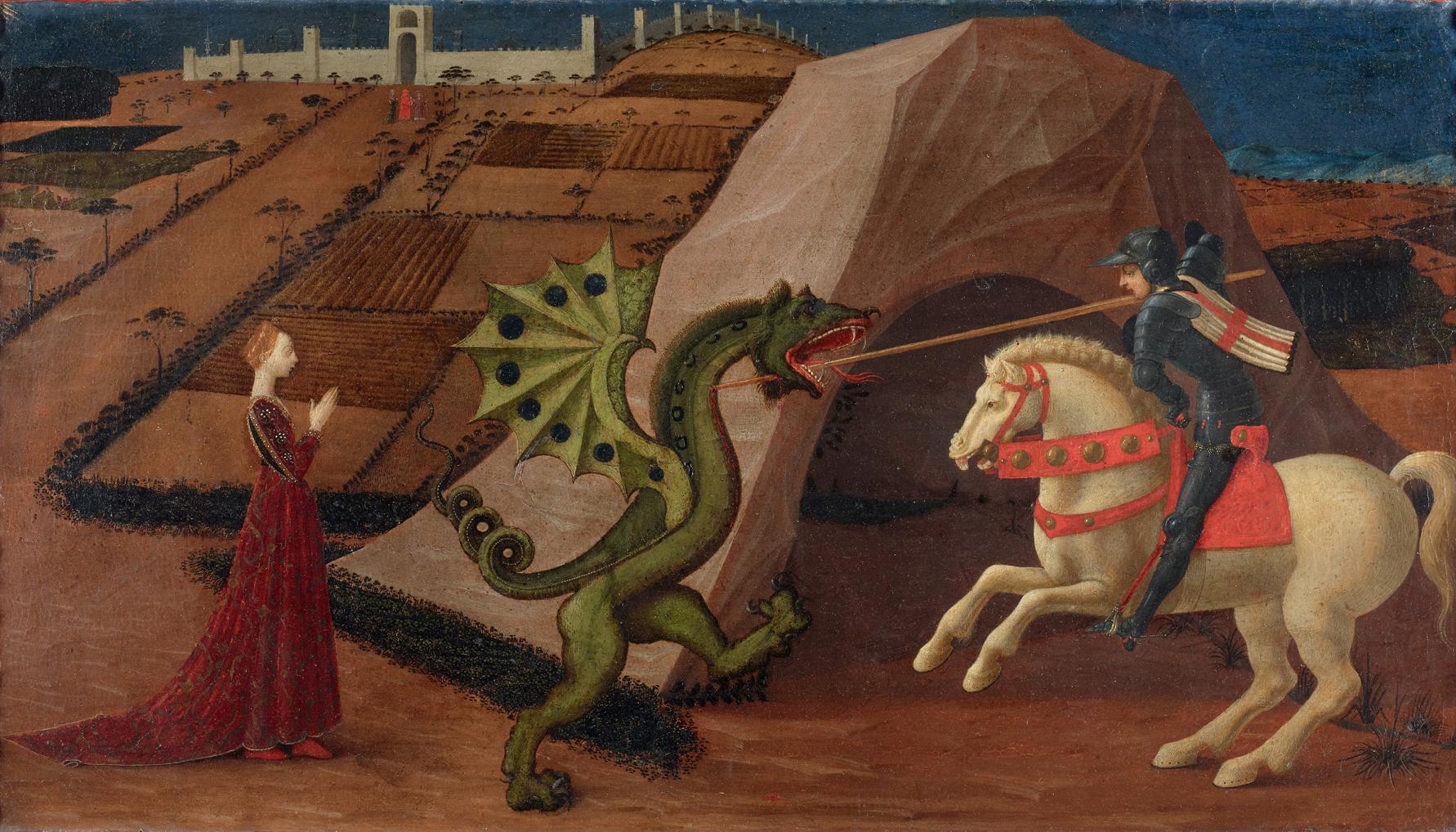CHAPTER IV
JONATHAN HARKER’S JOURNAL
28 May.—There is a chance of escape, or at any rate of being able to send word home. A band of Szgany have come to the castle, and are encamped in the courtyard. These Szgany are gipsies; I have notes of them in my book. They are peculiar to this part of the world, though allied to the ordinary gipsies all the world over. There are thousands of them in Hungary and Transylvania, who are almost outside all law. They attach themselves as a rule to some great noble or boyar, and call themselves by his name. They are fearless and without religion, save superstition, and they talk only their own varieties of the Romany tongue.
I shall write some letters home, and shall try to get them to have them posted. I have already spoken them through my window to begin acquaintanceship. They took their hats off and made obeisance and many signs, which, however, I could not understand any more than I could their spoken language…
I have written the letters. Mina’s is in shorthand, and I simply ask Mr. Hawkins to communicate with her. To her I have explained my situation, but without the horrors which I may only surmise. It would shock and frighten her to death were I to expose my heart to her. Should the letters not carry, then the Count shall not yet know my secret or the extent of my knowledge…
I have given the letters; I threw them through the bars of my window with a gold piece, and made what signs I could to have them posted. The man who took them pressed them to his heart and bowed, and then put them in his cap. I could do no more. I stole back to the study, and began to read. As the Count did not come in, I have written here…
The Count has come. He sat down beside me, and said in his smoothest voice as he opened two letters:—
“The Szgany has given me these, of which, though I know not whence they come, I shall, of course, take care. See!”—he must have looked at it—“one is from you, and to my friend Peter Hawkins; the other”—here he caught sight of the strange symbols as he opened the envelope, and the dark look came into his face, and his eyes blazed wickedly—“the other is a vile thing, an outrage upon friendship and hospitality! It is not signed. Well! so it cannot matter to us.” And he calmly held letter and envelope in the flame of the lamp till they were consumed. Then he went on:—
“The letter to Hawkins—that I shall, of course, send on, since it is yours. Your letters are sacred to me. Your pardon, my friend, that unknowingly I did break the seal. Will you not cover it again?” He held out the letter to me, and with a courteous bow handed me a clean envelope. I could only redirect it and hand it to him in silence. When he went out of the room I could hear the key turn softly. A minute later I went over and tried it, and the door was locked.
When, an hour or two after, the Count came quietly into the room, his coming awakened me, for I had gone to sleep on the sofa. He was very courteous and very cheery in his manner, and seeing that I had been sleeping, he said:—
“So, my friend, you are tired? Get to bed. There is the surest rest. I may not have the pleasure to talk to-night, since there are many labours to me; but you will sleep, I pray.” I passed to my room and went to bed, and, strange to say, slept without dreaming. Despair has its own calms.
Apologies for the rather unseemly slurs. As much as I maintain that Stoker was a very progressive writer for his time, sometimes his language does not match with modern standards of acceptability.
What counts as a slur depends on context and intention, thus, no slurs to be found here.
Not related to this chapter, but I was wondering why Count Dracula can move like a lizard. Is this common in vampire legends ? I know that St. George’s day has different meanings in different countries (in Romania : the famous dance of vampires and demons). But could this be in any way related to the St George folklore as popularized by Jacques de Voragine in La Légende Dorée (Golden Legend), 1249-1266, where St. George slays a dragon terrorizing the city of Silenus in Libya ? This scene has been painted by many artists throughout history. For Christians, it symbolizes the deliverance of the Church, oppressed by paganism.

Saint George and the dragon
Paolo Uccello (1397 - 1475)
1430-35, painted wood panel, 131 x 103 cm
This is a great question!
could this be in any way related to the St George folklore … where St. George slays a dragon
Yes, it definitely could! Dracula actually means “son of the Dragon”. The namesake of our vampire, Vlad III of Wallachia, was the son of Vlad II “Dracul” (meaning “the dragon”), as he was named to the Order of the Dragon, a chivalric knightly order, similar to the Knights Templar or the Order of Malta.
Oh, I didn’t know that. Last year, I started to listen the first episode of a four-part podcast on Vlad the Impaler, broadcast on a french public radio. The descriptions of the impalements were horrific, so I stopped. I should try again.
Here, it says :
In Europe, the confusion between two Wallachian lords spawned a monstrous creature, and Dracula is based on this hybrid being composed of the father, Vlad Dracul—“dragon,” “devil,” or “stake,” depending on whether one favors the Latin etymology (draco) or Old Slavonic (dr’kol); and the son, Vlad Tepes, known as the Impaler.
On the vampire myth, it also says :
We know from a reliable source, since Stoker explicitly mentions it in these preparatory notes, that he learned a lot about vampiric manifestations through the reports of Dom Augustin Calmet for Louis XVI on the subject of vampire contagions in Europe.
The vampire epidemics throughout history could in reality have been “porphyria”, a parasitic disease.
The symptoms of this disease truly echo the physical and psychological representations of the vampire: anemia, extreme pallor, hypersensitivity to daylight and noise, irritability, reddening of the gums, teeth, and whites of the eyes, thickening of the nails, and even a garlic allergy that triggers catalepsy!
Remedies include seclusion, nighttime outings, and blood ingestion or transfusion to alleviate the anemia.
Since people buried in a state of catalepsy were not truly dead, some of them managed to escape from their tombs, and the legend was born.
Il y a une serie excellente sur Vlad III dans la chaine YouTube “Extra History”. C’est en anglais, mais il y a des sous-titres (aussi en anglais) qui on pourrait traduire automatiquement en francais, si tu preferes. Apres cette serie, ils ont un episode qui s’appelle “Lies”, sur les erreurs et les choses qu’ils ont dû omettre a cause du temps.
Ce n’est pas horrible ou trop graphique, je pense.

There’s an excellent series about Vlad III on the YouTube channel “Extra History”. It’s in English, but it has subtitles (also in English) that you can automatically translate into other languages if you prefer. After the series, they have an episode called “Lies” where they go over errors and things they had to leave out because of time.
It’s not horrific or too graphic, in my opinion.
The vampire epidemics throughout history could in reality have been “porphyria”, a parasitic disease.
Les vampires aussi ont des liens avec la tuberculose. Vampires also have links to tuberculosis/“consumption”.
https://en.wikipedia.org/wiki/New_England_vampire_panic
https://www.lung.org/blog/did-dracula-have-tb
light-sensitive eyes, low body heat, a weak heartbeat, and coughing up blood
Thank you ! I’ll watch it.
So now, just in case I encounter a vampire, I am willing to learn stenography.
I’ve started to compare all the methods, it’s a real headache : do I want to learn a quick method or a more complete one ? Do I like cabalistic symbols or the more rounded ones ? Can I find an old method easily, etc. ?
Damn you, Jonathan.
Which shorthand method do you think Jonathan and Mina might have used at the time ?
So now, just in case I encounter a vampire, I am willing to learn stenography.
With how easy it would be for a vampire to research stenography, I’d rather go with a more robust form of encryption. Probably the Vigenère cypher, with a good long keyphrase, for the balance of ease of calculating by hand while still being quite strong, especially if you don’t provide helpful tips such as spaces.
Which shorthand method do you think Jonathan and Mina might have used at the time ?
This Tumblr post suggests they probably would have used Pitman.
The problem with the Vigenère cypher is that you need to send two separate letters, right ? One with the key and the other with the encrypted text. Considering Dracula authorized Jonathan to send only three letters, he would have found it suspicious if he had sent two letters to the same correspondant. So Jonathan would have to hope that Mina would contact his boss by herself. And Dracula just gave Jonathan a few minutes to write his letters in front of him, so I don’t know…
For my personal use, I tried to buy a SFEA method but it’s almost impossible to find. The easiest method to find in France is apparently the Prévost-Delaunay method but it seems overcomplicated. I found this comparison on r/shorthand.

The problem with the Vigenère cypher is that you need to send two separate letters, right ? One with the key
No, you establish the key ahead of time, before you leave. It should not be communicated via the same means that the message itself is being communicated.
You could go even further and use a massive one-time pad. In theory, that would be even more secure (because a Vigenère key is basically a very short OTP that you reuse over and over again even within the same message), but because you cannot memorise the OTP, it would necessitate carrying the pad around with you, adding a security risk if your host should find the pad.
In Vigenère, you take your key and rotate each subsequent letter by an amount corresponding to the key, like a Caesar cypher where each letter has a different value. So if my key was “key”, the first, fourth, seventh, 10th, etc. letters would be rotated by 10 spaces (it’s typically zero-indexed, so A = “don’t rotate”), the 2nd, 5th, 8th, 11th, etc. letters would be rotated 4 spaces, and the 3rd, 6th, 9th, 12th, etc. letters would be rotated 24 spaces (or rotated backward 1 space). OTP is the same, but instead of a real word or phrase as the key, you have a long pad shared between both participants, which has at least as many letters as all messages to be communicated. The letters are usually chosen at random, so in addition to the security advantage of avoiding repetition, you get an extra advantage of the letters having no correlation with each other.
Dracula authorized Jonathan to send only three letters
I think you may be confusing events slightly. On 19 May, Dracula asked him to pen three letters which he would give to Dracula, and that Drac said he would send on certain fixed dates. Basically saying “hey, I’m leaving soon”, “hey, I just left”, and “hey, I left a few days ago and am now at Bistritz”.
Then, the very next entry in the book (but not in the chronological reading) on 28 May, Jonathan hands some letters he wrote in secret to the Romani. One to his boss in plain English, saying “speak to my fiancee, please.” And one to Mina, in shorthand. If things had gone according to plan, Dracula never would have known either of these letters existed.
There’s also an earlier entry on 12 May where Dracula tells Jonathan to write to his boss to say “Drac wants me to stay longer than our original plan”. It is at this time that Jonathan decides he’s going to write in secret, but he doesn’t execute this plan until the 28th.
Ah yes you’re right !
They attach themselves as a rule to some great noble or boyar, and call themselves by his name.
Real genius move, trying to turn the vassals of Dracula against him on the power of a single gold coin and a few grunted instructions from a complete stranger.
Any of the 3 lads woulda handled this a lot better. There’s some kinda dichotomy being set up here.
I think you’re being a bit unfair to Jonathan. What options does he have? He knows he’s being kept prisoner and is trying what he can to get a message out. Very many vassals would not be so loyal as to betray here, if they thought the chance they get caught is low.
And he was smart enough to write in code so that Dracula could not understand the message.
The Bayliss Rare Books in London sold last month, for £15.000, a letter by Bram Stoker written only a few weeks after Dracula was published in 1897.

My dear Williams, I send you Dracula & have honoured myself by writing your name in it. How is enclosed for high? Lord forgive me. I am quite shameless.
Yours ever,
Bram Stoker
https://www.theguardian.com/books/2025/apr/16/rare-letter-bram-stoker-early-thoughts-dracula
Oh wow, very cool! This should be its own post!
Done !



